Tag: fitness
7 Fitness Tips and Tricks to Live a Healthy Life

Fitness is considered as the condition of being slim and healthy. Living an active life is one of the desires in every wish list. We will review a few fitness tips and tricks to live a healthy life.
Many of you might think that today, living a healthy and disease free life is possible only if someone follows a proper diet plan or has joined a fitness training program.
What are the Advantages of Living a Healthy Life?
Living a healthy life isn’t just a fleeting trend; it’s a transformative choice that reverberates across every aspect of your existence. From physical well-being to emotional balance, here are the profound advantages that await those who choose to prioritize their health:
- Enhanced Physical Well-being: Embracing a healthy lifestyle significantly improves your physical health. A balanced diet, regular exercise, and adequate sleep work in harmony to boost energy levels, strengthen your immune system, and reduce the risk of chronic diseases.
- Increased Longevity: Investing in your health pays off in the long run. Studies consistently show that individuals who adopt healthy habits tend to live longer, experiencing a higher quality of life well into their golden years.
- Improved Mental Health: Physical well-being is intricately linked to mental health. Regular exercise and a nutritious diet can positively impact mood, alleviate stress, and reduce the risk of conditions such as depression and anxiety.
- Enhanced Cognitive Function: A healthy lifestyle nurtures brain health. Nutrient-rich foods, regular exercise, and mental stimulation contribute to improved memory, focus, and cognitive function as you age.
- Weight Management: Adopting healthy habits helps maintain a healthy weight. Balanced nutrition and regular physical activity prevent obesity, reducing the risk of weight-related health issues.
- Increased Energy and Vitality: Living healthily translates into increased vitality. You’ll find yourself energized to tackle daily tasks, pursue hobbies, and engage fully in life’s adventures.
- Improved Sleep Quality: Healthy habits positively influence sleep patterns. Regular exercise and a balanced diet promote better sleep quality, leading to improved rest and overall well-being.
- Enhanced Body Image and Self-confidence: Prioritizing your health often leads to a more positive body image. Achieving fitness goals and feeling good in your skin boost self-confidence and self-esteem.
- Stronger Immune System: A healthy lifestyle bolsters your immune system’s ability to ward off infections and illnesses. Nutrient-rich foods and regular exercise support immune function.
- Reduced Risk of Chronic Diseases: Healthy living reduces the risk of chronic diseases such as heart disease, diabetes, and certain cancers. This proactive approach to health safeguards your future well-being.
- Better Digestive Health: A nutritious diet rich in fiber promotes optimal digestive health. This contributes to better nutrient absorption, regular bowel movements, and reduced gastrointestinal discomfort.
- Positive Social Impact: Embracing a healthy lifestyle can inspire others to do the same. Your journey can influence friends, family, and colleagues to make positive changes for their health as well.
- Improved Productivity and Focus: A healthy lifestyle enhances cognitive function, increasing your ability to concentrate, make decisions, and perform tasks efficiently. This translates into improved productivity in both personal and professional spheres.
- Balanced Emotions and Well-being: Healthy living promotes emotional equilibrium. Balanced nutrition, exercise, and self-care practices contribute to a more positive outlook on life.
- Reduced Healthcare Costs: Preventive measures associated with a healthy lifestyle often result in reduced healthcare expenses. Fewer doctor visits and lower medication costs contribute to financial well-being.
Choosing a healthy lifestyle isn’t just about the physical; it’s a holistic commitment to your overall well-being. The advantages ripple through every aspect of your life, granting you the opportunity to savor each moment with vitality, confidence, and a sense of purpose.
Diet and Healthy Eating Routine
A weight reduction eating routine ought to guarantee general health and need to have the capacity to keep up a sound body mass. The weight reduction eating routine ought to include mixture of healthy ingredients which give vital sustenance to our body.
Anyway, losing a weight implies that you have to keep away from tasty cakes, biscuits, and different treats or dishes which comes about into setting up weight by boosting calories intake. Indeed, you have to turn your head towards agonizing and crunching activities, squeezes and green veggies.
Then again, shedding pounds is not only about eating less and moving more than normal. Abstaining from food is not an important part of a healthy fitness program.
Fitness Tips and Tricks to Live a Healthy Life
There are a few approaches to get thinner like weight loss eating regimen, daily sports activities to get more fit and so forth. Here we examine some vital points to getting more fit quickly and rapidly.
Let’s review some amazing fitness hacks that can also be followed on a daily basis to remain healthy and physically fit on a long-term basis. Some of them are explained briefly as follows:
- Stay active – Activeness simple means to keep yourself busy in various activities involving your body as well. Regular movements make the body active and allow our brain to think positively. To remain active, one can keep working on different tasks that involve body movement at regular intervals.
- Exercise regularly – Regular exercise is an inseparable part of the daily routine of a healthy person. Daily exercise keeps the body and mind in tune and relaxed. It is not necessary to work out insanely to be fit. A simple stretching and few easy exercises can do the wonder if done on regular basis. It is also advisable to attempt only those exercises which your body can resist. Include strolling in your day by day exercise which make fit your body and supportive to quick get in shape. In Consistently morning you can walk 3 -4 km day by day, don’t walk quick or like running, simply stroll as you do. You can take after around few tips in the event that you’re not happy in morning like get off the transport in few stands before and continue strolling to your destination, use stairs rather than lift.
- Drink more and more water – Water makes our body fresh and full of energy. Thus, it is necessary to drink a good quantity of water daily as it not only relaxes our body system but also makes it indefatigable. One of the best examples of drinks that might help in weight reduction is green tea. Green tea has long been bantered as a weight reduction help, and more research is expected to affirm or deny how well it functions. While a few studies have turned up nothing, others have distinguished three primary parts in green tea that could help oversee weight-caffeine, Catechins, and Theanine. Caffeine is only a general help to your framework, and accelerates various substantial procedures, including digestion system identified with weight
- Wake up early in the morning – Morning is the most serene and relaxed time of the day. If you are aiming to have a healthy body, then it is suggested to change your wake-up timing at the earliest. It is advisable to get up early in the morning and do morning exercises as this impact more on our body.
- Morning walk or jogging – As said earlier, morning is the best time for exercise and so is the morning walk that plays a vital role in attaining a healthy body. This gives an active start to the day and makes your mind feel relaxed and contented. A morning walk or jogging helps the body getting the important blood circulation and also makes the body strong enough to fight against the diseases.
- Eating a healthy diet – Food acts as a supplement for making the body healthy. There is a need to understand what a person should include in his diet to stay healthy. One should always try to eat fresh food and must include more and more fruits in the diet. Junk food and food rich in oil should be avoided to keep the body free from extra weight. Look for healthier options even if you need to gain weight! One should also try to eat food in a small amount. It has been advised that to stay healthy one should eat six times a day with small quantities as it will make body system active.
Other than writing down what you ate, and when, you may likewise need to note how you were feeling just before you ate it, and you were after your meal. Is it true that you were stressed or exhausted? Did it change after your meal? We regularly concentrate on things such as an amount of calories; however, our feelings are a colossal piece of our dietary patterns. In case you see a constant example in your eating patterns, please consider discussing with an expert about it. They can be a major help in discovering different approaches to handle your eating patterns. - Take adequate sleep – Sleep revitalizes our body, therefore, it is very important for us to have a sleep of 8 hours on daily basis. This makes our body relaxed and prepares us for the tasks which we are going to do on the next day. Hence, one should avoid waking up late and should sleep early to give the body enough time to relax. Not a solitary, but rather quantities of studies have discovered the relationship in the middle of rest and weight. A late study at the College of Colorado demonstrated: you can harm your waistline in only five evenings. A five-hour rest taken by individuals every night over a re-enacted weeks’ worth of work picked up right around two pounds, expressed by study co-creator Kenneth Wright, Ph.D. (College Sleep and Chronobiology Research facility). Absence of rest incite the individuals to eat more than normal, and they feel hunger. Rest is a critical for your wellbeing as a sound eating routine and working out, says Wright. Take a stab at rolling out these solid improvements to get thinner as opposed to being terrified of beginning an eating routine as summer methodologies.
Why Dietary Supplements Are So Popular for Fitness Goals
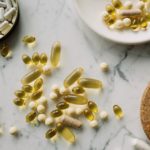
Just as its name implies, a dietary supplement is a product, like a medicine, taken to supplement a diet for the purpose of improving one’s health. Examples of supplements are vitamins and minerals (calcium, iron, etc.) probiotics, herbal products and so on. And they are available in different forms: tablet, powder, liquid, etc. While drugs are taken mainly to cure an illness, dietary supplements are simply meant to support one’s diet.
Why Dietary Supplements Are So Popular
Why are dietary supplements so popular? The majority of the population is using at least one type of dietary supplements because of the benefits for fitness. Some of the reasons why supplements are so popular are highlighted and explained below:
Provision of Additional Nutrients
This is the primary purpose of taking dietary supplements. Depending on various factors, we all have different nutritional needs. Many times, the foods we take may not provide all the nutrients our body needs. Using supplements is a good way to cover nutritional gaps in your diet.
Cost-effectiveness
Many people take supplements because doing so is a cheaper way to get additional nutrients into the body and maintain sound health. Dietary supplements are readily available at all drugstores and inexpensive.
To Address Deficiencies
Those whose body systems are deficient in a particular nutrient resort to the use of supplements to provide lacking nutrients. For example, an iron supplement would be for someone with iron deficiency and so on. These deficiencies can be halted by the use of supplements before they lead to a serious illness.
To Prevent Health Problems
Dietary supplements are also used to prevent one from having a serious health issue. Taking the right supplements and appropriately puts one in less risk of sickness and (depending on the type) gives extra energy and even helps in losing weight.
Athletics
Athletes and those who do a lot of bodybuilding and exercises depend on diet supplements to maintain their health. Sports, generally, and exercising frequently put a strain on one’s body and increase their nutritional needs. Sportspeople meet up to these needs by the use of supplements. Dietary supplements are also known to enhance one’s energy for heavy physical activities.
Maintenance of Sound Health
There are people who use supplements, not because of a specific problem or need, just to maintain their health. Proper use of the right supplements can boost one’s immunity, that is, one’s ability to fight illnesses. This is why people who use supplements properly usually seem healthier.
The Age Factor
It is not news that the ability of a person to do a lot of things reduces as the person reaches advanced years. This also includes the absorption of nutrients from food. Old people need supplements to beat this challenge. Apart from that, they are more prone to many illnesses and good use of supplements can strengthen their immune system and improve their health.
Why are Dietary Supplements Useful for Fitness Goals?
Dietary supplements have gained popularity as a valuable addition to fitness routines, offering targeted support to help individuals achieve their fitness goals. When integrated thoughtfully and responsibly, supplements can provide various advantages that complement your fitness journey. Here’s why dietary supplements are useful for fitness goals:
- Nutrient Gaps Filling: Even with a well-balanced diet, it can be challenging to obtain all the necessary nutrients for optimal performance. Supplements bridge potential nutrient gaps, ensuring your body has the essential vitamins, minerals, and nutrients it needs to thrive.
- Muscle Recovery and Growth: Certain supplements, such as protein powder and amino acids, aid in muscle recovery and growth. Protein supplements provide the building blocks necessary for repairing and building muscle tissue after intense workouts.
- Improved Energy Levels: Supplements like B-vitamins and iron play a role in energy metabolism. By supporting efficient energy production within cells, these supplements can help you maintain stamina and endurance during workouts.
- Enhanced Performance: Creatine is a well-known supplement that can enhance high-intensity exercise performance. It increases the body’s ability to produce energy rapidly, making it beneficial for activities like weightlifting and sprinting.
- Joint Health Support: Supplements like glucosamine and chondroitin are often used to support joint health. They may help alleviate joint discomfort that can arise from intense physical activity.
- Targeted Fat Loss: Certain supplements, such as thermogenic compounds and green tea extract, are believed to support fat loss by increasing metabolic rate and promoting calorie burning.
- Convenience and Efficiency: Supplements offer a convenient way to ensure you’re getting specific nutrients, especially for those with dietary restrictions or limited time for meal preparation.
- Immune System Support: Vitamins and minerals like vitamin C, vitamin D, and zinc are crucial for immune system function. Ensuring your immune system is functioning optimally is particularly important during periods of intense training.
- Adaptation to Intense Training: Supplements like adaptogens (e.g., ashwagandha, rhodiola) are believed to help the body adapt to stress, including the physical stress of intense workouts.
- Personalized Approach: Supplements can be tailored to your unique needs and fitness goals. Whether you’re aiming to build muscle, improve endurance, or lose weight, there are supplements designed to support your specific objectives.
- Recovery and Inflammation Reduction: Omega-3 fatty acids and antioxidants found in some supplements can help reduce inflammation, aiding in post-workout recovery and overall well-being.
- Support for Special Diets: If you follow a restrictive diet (e.g., vegan, vegetarian), certain nutrients may be harder to obtain. Supplements can help ensure you’re not missing out on critical vitamins and minerals.
- Regulated Intake: High-quality supplements undergo regulatory scrutiny, ensuring that the ingredients and dosages are accurate and safe for consumption.
While dietary supplements can be beneficial, it’s important to remember that they’re intended to complement a healthy diet, not replace it. Consult a healthcare professional or registered dietitian before adding supplements to your routine, as they can guide you toward choices that align with your fitness goals and individual health needs. Responsible supplementation, combined with a balanced diet and regular exercise, can contribute to optimized fitness results.
Conclusion
In conclusion, dietary supplements are very useful for one’s health. Several types of supplements have been tested by scientists and medical experts and proven to benefit the human body system in various ways.
Fitness for Mental Health: How Does Fitness Help Your Brain?

We all have a stressed life and that can cause us to struggle with mental illness. The more happy and positive you are the better will be your mental health.
What is Mental Health?
Mental health is a level of psychological well-being or an absence of mental illness. It is directly linked to our daily activities and physical health. The mental health of an individual helps him/her to determine the stress level, relate other things and make choices between different activities.
Fitness for mental health is a must for all of us for maintaining a well being of our mental conditions. What are the main factors of fitness for mental health?
We need healthy and positive surroundings that can help us develop our mental health and keep it strong and healthy. This is what we call “Fitness for Mental Health”.
Factors of Fitness for Mental Health
For maintaining sound mental health following factors should be given utmost importance:
- Lifestyle. The lifestyle of today’s world has completely gone on the wrong track being really harmful to the mental health of a person. The lifestyle is the first factor to affect the mental health of any individual. Today we lead a junky life where we have no time for ourselves as well as for others which kills our health as well brain resulting in various diseases and other mental problems. A healthy lifestyle not only leads to the development of mental health but also helps in living a positive and healthy life.
- Exercises and Level of Activity. Exercising every day both for mental and physical health is a boon. The more you work to maintain your body the more your body releases a specific amount of antidepressant to keep you smiling all day long. Working out at a park or in an open area also promotes mental health and helps you stay happier all day long. The more you are active, the more your brain releases positivity to ensure a good mental health.
- Socializing. Another important factor for maintaining proper mental health is by interacting or socializing with people and not keeping you caged in between the electronics and your work pressure. The mind demands rest and socializing can provide you with lots of positivity and helps you synchronize your daily work. The more you socialize, the more you feel better to deliver your best in the real world. This activity not only influences your mental health but also helps in increasing your knowledge about the world and other related aspects.
- Meditation. Another useful and natural process to cure mental health is to meditate on a regular basis. Meditation in addition to basic exercises promotes inflow of oxygen in the brain thereby leading to better health; be it physical or mental. Meditation also refreshes our thoughts and it is regarded as a boon for promoting human health as it demands the active participation of both mind and body.
- Healthy Sleep. According to scientific researchers, a person should sleep for at least 7-8 hours every day. Proper sleep helps the body to regulate and eliminate all the body toxins that have entered into your body all through the day. A sound sleep at night is the best medicine to cure your daily mental tiredness.
- Being happy. Last but not the least, a “happy you” is always a “healthy you”. The more you are happy and positive, the more you are mentally fit. The life of a patient suffering from deadly diseases such as cancer, asthma is not easy, but, if the patient is mentally strong, he can even pursue to cure it in time and lead a healthy life. A healthy diet with proper appetite, a good lifestyle with a couple of exercises on a regular basis can give you a brighter, better and tension free life.
How Does Fitness Help Your Brain?
While the physical benefits of fitness are well-known, its positive impact on the brain is equally remarkable. Engaging in regular physical activity doesn’t just strengthen muscles and bones—it also supports cognitive function, mental well-being, and overall brain health. Here’s how fitness nurtures your brain’s vitality:
- Enhanced Blood Flow: Exercise stimulates blood circulation, ensuring that oxygen and essential nutrients are delivered to the brain. This increased blood flow promotes brain health by supporting the growth of new neurons and fostering optimal cognitive function.
- Neurotransmitter Boost: Physical activity triggers the release of neurotransmitters, including endorphins, dopamine, and serotonin. These chemicals contribute to elevated mood, reduced stress, and enhanced mental clarity.
- Improved Learning and Memory: Exercise has been linked to improved learning and memory retention. It enhances the brain’s ability to form new neural connections, facilitating the absorption and retention of information.
- Neuroprotective Effects: Regular physical activity has been shown to have neuroprotective effects, guarding the brain against age-related decline and reducing the risk of neurodegenerative diseases like Alzheimer’s and Parkinson’s.
- Stress Reduction: Exercise is a natural stress reliever. It reduces levels of stress hormones, such as cortisol, and encourages the production of endorphins, which promote feelings of relaxation and well-being.
- Enhanced Brain Plasticity: Neuroplasticity, the brain’s ability to adapt and rewire itself, is influenced by exercise. Engaging in physical activity encourages the brain to create new neural pathways and adapt to changing circumstances.
- Mood Elevation: Exercise acts as a mood booster. It helps alleviate symptoms of anxiety and depression by increasing the availability of mood-regulating neurotransmitters like serotonin.
- Stress Resilience: Regular exercise increases your ability to handle stress and bounce back from challenging situations. This enhanced resilience extends to both physical and mental stressors.
- Increased Focus and Attention: Physical activity enhances cognitive abilities such as focus, attention, and problem-solving. It primes the brain for better concentration and mental clarity.
- Reduced Cognitive Decline: Staying physically active throughout life is associated with a decreased risk of cognitive decline as you age. Exercise supports brain health and helps preserve cognitive function.
- Improved Sleep Quality: Regular exercise contributes to better sleep quality, which is essential for cognitive function, memory consolidation, and overall mental well-being.
- Regulation of Mood Disorders: Exercise has a regulatory effect on mood disorders such as depression and anxiety. It can serve as a complementary strategy alongside other treatment modalities.
- Stress Management: Physical activity provides an outlet for stress release, helping prevent the negative effects of chronic stress on brain health.
- Neurogenesis: Exercise promotes the growth of new neurons in the brain, a process known as neurogenesis. This supports cognitive flexibility and adaptability.
- Cognitive Resilience: Engaging in regular exercise builds cognitive resilience, allowing the brain to function optimally even when faced with challenges or age-related changes.
Incorporating regular physical activity into your routine isn’t just a gift to your body – it’s a profound investment in your brain health. As you embark on your fitness journey, you’re nurturing not only your physical well-being but also harnessing the remarkable benefits that exercise brings to your mental faculties and overall cognitive prowess.
Fitness VS Bodybuilding: Which is Better Fitness or Bodybuilding?

Fitness is maintaining the body’s shape; while bodybuilding talks about the building the muscles.
Bodybuilders put emphasize on fitness for participating in specific sports activities. Before taking part in any competition they increase the strength and endurance of the muscles. Fitness simply means performing regular activities in an efficient way i.e. without feeling tired.
Fitness includes both physical and mental fitness whereas bodybuilding can only be associated with the physical component.
Difference between fitness and bodybuilding on the basis of:
- Diet Intake – The diet intake by bodybuilders differs from the diet plan of persons who perform fitness activities. Bodybuilders consume high-calorie food while others prefer low-calorie food items. Bodybuilders are largely dependent on the protein-rich diet as it augments their capabilities, but fitness-oriented individuals are more tend to approach a balanced diet. Finally, bodybuilders also include other supplements in their diet such as proteins or carbohydrates in order to increase their muscle power before participating in any weightlifting or bodybuilding competition. On the other hand, a normal person who just wants to regain his fitness level doesn’t require such elements in their diet.
- Activities Involvement – The physical activities performed by both the parties are also different such as normal fit persons do more cardiovascular exercises whereas bodybuilders go to weightlifting that involves more complicated exercises. Even the fitness models do more vigorous activities than bodybuilders. Body builder’s sole focus is to do muscle exercises whereas other individuals who go for fitness training programs where they put equal attention to each body part.
- Duration of Exercise – Bodybuilding exercises last for longer durations whereas fitness session timings vary from 30 to 45 minutes. Thus, bodybuilding needs the perseverance of one’s while fitness can be achieved by just going an extra mile i.e. doing physical activities other than their routine tasks.
- Effect on Body – Since bodybuilders do heavy exercises, therefore their body is more rigid as compared to that of a normal person who does exercise to remain fit and healthy. Bodybuilding is a deeper concept than simply achieving fitness as it requires more efforts.
- Side Effects – Bodybuilding often requires a heavy intake of diet as compared to that of a normal person. Also, bodybuilders have to consume certain medicines sometimes to gain muscles more quickly. These medicines often have side effects on the body of the bodybuilders and sometimes it might cause death too. While on the other hand, those people who do exercise just to keep their body fit don’t have such risk of losing their lives.
The fascinating attribute of the bodybuilder is his six-pack abs which can’t be achieved by normal fitness programs. Bodybuilders always stand out in the crowd for their muscle power and strength. The boxers, wrestlers, and weightlifters also give utmost importance to bodybuilding. The bodybuilding training can have side effects on one’s body whereas fitness training will improve one’s efficiency and productivity in other tasks as well.
Which is Better Fitness or Bodybuilding?
“Fitness” and “bodybuilding” are both terms associated with physical well-being and strength, but they represent distinct approaches to training and achieving health goals. Deciding which is better depends on your individual preferences, goals, and lifestyle. Let’s delve into the differences between fitness and bodybuilding to help you make an informed choice:
Fitness
Fitness encompasses a holistic approach to overall health and well-being. It focuses on improving cardiovascular fitness, muscular endurance, flexibility, and overall functional capacity. Fitness routines often include a mix of cardiovascular exercises (e.g., running, cycling, swimming), strength training, flexibility work (e.g., yoga, stretching), and balanced nutrition.
Advantages of Fitness:
- Well-rounded Health: Fitness training promotes overall health and vitality, supporting cardiovascular health, flexibility, and functional movement.
- Sustainability: Fitness routines are often more sustainable in the long term due to their diverse and balanced nature.
- Adaptability: Fitness workouts can be tailored to different fitness levels and ages.
- Holistic Approach: Fitness encompasses physical, mental, and emotional well-being.
Disadvantages of Fitness:
- Slower Muscle Growth: While fitness improves strength, it may not yield the same level of muscle hypertrophy as bodybuilding.
- Specific Goals: Fitness may not provide the same level of specialization for those with very specific physique goals.
Bodybuilding
Bodybuilding is a focused approach to building muscle mass and sculpting a well-defined physique. It involves structured resistance training with the goal of increasing muscle size and symmetry. Bodybuilders often follow strict dietary plans and use techniques such as “bulking” (gaining muscle mass) and “cutting” (losing body fat) to achieve their desired look.
Advantages of Bodybuilding:
- Muscle Definition: Bodybuilding emphasizes muscle hypertrophy and can lead to a well-sculpted physique.
- Structured Approach: Bodybuilding often involves detailed training plans and dietary strategies.
- Goal Orientation: Bodybuilding is ideal for those with specific aesthetic goals.
Disadvantages of Bodybuilding:
- Time and Effort: Bodybuilding requires significant time commitment, both in training and meal preparation.
- Potential for Imbalance: Focusing solely on aesthetics may neglect other aspects of fitness and overall well-being.
- Intense Demands: Competitive bodybuilding involves rigorous training and dietary restrictions that might not align with everyone’s lifestyle.
Choosing What’s Right for You
The choice between fitness and bodybuilding ultimately depends on your goals, preferences, and lifestyle. If you’re seeking a well-rounded approach to health and longevity, fitness may be more suitable. If your primary focus is building muscle mass and achieving a specific physique, bodybuilding could be a better fit. Remember that there’s no one-size-fits-all answer, and you can also combine elements of both approaches to create a fitness routine that aligns with your individual goals and values.
Why Fitness is Better than Bodybuilding?
While both fitness and bodybuilding have their merits, a case can be made for the superiority of fitness when it comes to overall well-being and long-term health. Here’s why embracing a holistic approach to fitness often outweighs the focus on bodybuilding:
- Sustainable Lifestyle: Fitness is a lifestyle that can be sustained throughout your life. It promotes balanced exercise routines, diverse physical activities, and mindfulness practices that contribute to lifelong health and vitality. Bodybuilding, on the other hand, may involve extreme dietary restrictions and intense training phases that can be challenging to maintain over time.
- Comprehensive Health Benefits: Fitness addresses various components of health, including cardiovascular fitness, muscular endurance, flexibility, and mental well-being. It supports not only physical health but also emotional and mental balance, promoting a higher quality of life.
- Functional Strength: Fitness training emphasizes functional strength that is relevant to everyday activities. It focuses on movements that enhance your ability to perform tasks efficiently, making daily life more manageable and enjoyable.
- Reduced Risk of Injury: A balanced fitness routine reduces the risk of overuse injuries often associated with bodybuilding. By incorporating a variety of exercises and movements, you promote better muscle balance and joint stability.
- Customization and Adaptability: Fitness routines can be tailored to your individual goals, fitness level, and preferences. This adaptability allows you to create a sustainable and enjoyable regimen that evolves as your needs change.
- Cardiovascular Health: Fitness training places a strong emphasis on cardiovascular health through activities like running, cycling, and swimming. A healthy cardiovascular system is essential for overall well-being and longevity.
- Mental and Emotional Well-being: Engaging in fitness activities supports mental health by reducing stress, anxiety, and depression. Regular physical activity stimulates the release of endorphins, enhancing mood and promoting relaxation.
- Focus on Longevity: Fitness prioritizes overall health and longevity, focusing on maintaining well-being as you age. This is in contrast to bodybuilding, which may prioritize short-term aesthetic goals.
- Inclusivity: Fitness is inclusive of people of all ages, fitness levels, and body types. It encourages everyone to participate and improve their health, fostering a sense of community and support.
- Balanced Aesthetics: Fitness promotes a balanced and healthy physique rather than an extreme focus on muscle size and definition. It embraces the idea that health is more than just appearances.
- Lifelong Learning and Growth: The pursuit of fitness encourages ongoing learning about exercise, nutrition, and holistic well-being. This continuous growth contributes to a richer understanding of your body and its needs.
- Greater Focus on Health Markers: Fitness emphasizes health markers such as cholesterol levels, blood pressure, and metabolic health. These markers are essential for preventing chronic diseases and maintaining vitality.
While bodybuilding may be appropriate for those with specific aesthetic goals, fitness offers a more holistic and sustainable approach to health. By prioritizing a balanced lifestyle, functional strength, and overall well-being, you’re investing in a lifelong journey toward vitality, longevity, and a fulfilling life.
Conclusion
Some people often get confused with the terms and think that they are the same but in actual both the terms represent the two sides of the coin. To some extent they can be considered similar, the only difference which comes out is the frequency and intensity of the workout activities.
Therefore, on one hand, bodybuilding can be considered as the concept of increasing the muscle size and on the other side; fitness training is a program to achieve beauty and complete well-being.
Top 5 Reasons You Should Train Your Glutes to Be Stronger
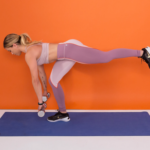
The shape of your buttock is usually linked with beauty standards. Most people even call it Kardashian booty, but they forget how important it is to train your glutes. Within your back muscles, you will have to work on the Maximus, Medius, and Minimus.
All these three muscles collectively make glutes. These muscles are one of the largest and strongest muscles within your whole body. That is where you hold weight and where you balance your body. If your glutes muscles are uneven or not very well-trained, you will see the impact in your posture.
You will not be able to stand properly and this will also have an impact on your exercise routine and your body balance.
When you walk or stand, it is not just your leg muscles at work. It is also your glutes that are mainly connected to the hamstring. Even when you move your leg, extend it or rotate it, you will see the impact on your whole body. There are so many benefits of having stronger glute muscles, it helps you reduce the chance of injury, improve your body posture, and a lot more.
With the help of this article, we will mainly highlight why you need to work on your glutes and how this will eventually impact your body in real life. We will also talk about the benefits that are linked with stronger glutes.
Are Glutes a Hard Muscle to Build?
Building glutes, also known as the muscles of the buttocks, can vary in difficulty from person to person based on genetics, training approach, and individual factors. Glutes are composed of three main muscles: the gluteus maximus, gluteus medius, and gluteus minimus. While some individuals may find it relatively easier to develop glutes, others might face more challenges. Here are some factors to consider:
- Genetic Predisposition: Genetics play a significant role in determining the shape and size of your glutes. Some people naturally have a higher potential for larger and more defined glutes due to their genetic makeup.
- Muscle Activation and Recruitment: For some individuals, effectively activating and engaging the glute muscles during exercises can be challenging. Proper technique and focused mind-muscle connection are important for optimal glute development.
- Training Consistency: Consistency in training is crucial for muscle growth. Building glutes requires regular strength training exercises that target the glute muscles, such as squats, deadlifts, lunges, hip thrusts, and glute bridges.
- Progressive Overload: Progressive overload involves gradually increasing the resistance, weight, or intensity of exercises over time. This principle is essential for muscle growth. If you’re not challenging your glutes with increasing resistance, growth may be slower.
- Nutrition and Recovery: Nutrition and recovery play a significant role in muscle development. Adequate protein intake, proper hydration, and sufficient rest are important for optimal muscle growth and recovery.
- Individual Variation: Everyone’s body responds differently to training stimuli. Some individuals might see rapid glute development with the right training approach, while others might experience slower progress.
- Gender Differences: In general, females tend to store more subcutaneous fat around the glutes due to hormonal differences. While this can contribute to a curvier appearance, it doesn’t necessarily mean building muscle is more challenging.
- Training Program: A well-structured training program that includes a variety of glute-targeted exercises and different rep ranges can optimize glute development. Compound movements like squats and deadlifts, along with isolation exercises, can help achieve well-rounded results.
- Patience and Persistence: Building glutes takes time and consistent effort. It’s important to stay patient and persistent, as muscle growth doesn’t happen overnight.
While glute development can be challenging for some individuals, with the right approach, dedication, and focus on proper technique, most people can achieve noticeable improvements in their glute muscles.
Reasons You Should Train Your Glutes to Be Stronger
Enhances Beauty
We all know that tight, round bottoms are linked with beauty, thanks to the Kardashian family. As slim-fit jeans are in fashion, everyone wants to keep their curves on display. Apart from the beauty they also help you to look good in your dress especially if you like to wear slim fit dresses.
This is a myth that only women need to have round booty, men are also appreciated when they have a well-balanced body structure. Most men only focus on upper body strength, so this makes them look out of proportion.
With better glute shape, your body will be in proportion, and you will not lose the shape of your body.
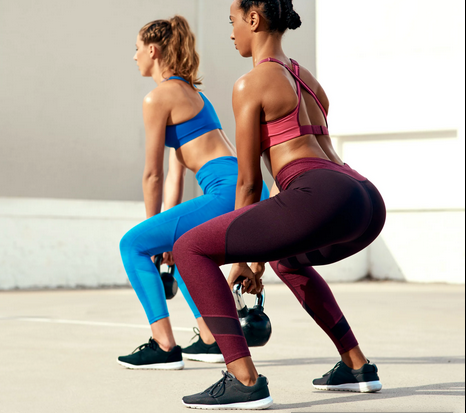
Improves Posture
One of the main issues behind muscles strain, chronic pains, and a bad picture is bad body posture. We have seen that people with bad posture look very bad in pictures. This is the reason models and fashion gurus have very good body posture.
Apart from this, bad body posture impacts confidence and looks as well. People who sit cross leg or have jobs that require them to sit at a fixed place for long hours end up with severe posture issues. With the help of glutes strengthening exercises, they will be able to improve their body posture and look much more confident.
Reduce Chance of Injury
Glutes are the place where your upper body and lower body find their balance. In case you do not have a good balance, this will affect your back, and eventually, it will cause injury.
People with joint pain especially, if there is a knee pain or spine issue it can be linked with the glutes muscles. If you work on strengthening your glutes muscle, you will eventually see improvement in your joint pain as well.
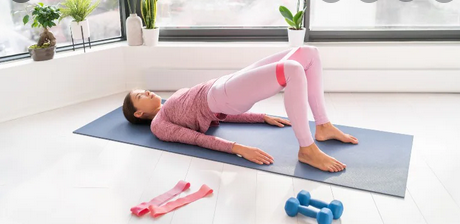
Improves Athletic Performance
If you are an athlete, or you are interested in combat games, glutes strength will play a major role. Apart from this if you are a marathon runner, a footballer, or a cricket, glute exercises will help you improve your body balance and stability.
Treat Back Pain
Back pain is getting very common. Previously, back pain was only linked with old age, but now we can see that young people are also complaining about back pain. This is mainly because tech-based jobs require you to sit for long hours in the same position.
To reduce the chance of back pain, it is important to work on the strength of your glutes muscles. Eventually, your posture will become better and your body will gain back the lost flexibility, and you will get rid of the back pain.
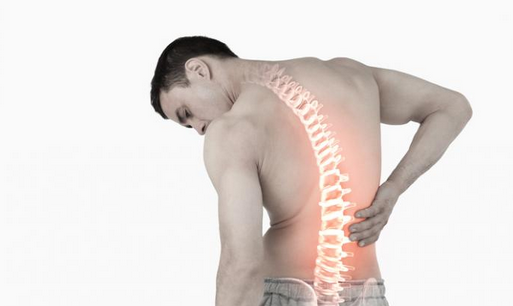
Bottom Line
To sum it all up, people usually link glutes with beauty only, but they forget it has so many other benefits as well. From maintaining good body balance to helping you improve your posture, there are different reasons you should train your glutes. You will see an impact in your daily life. Most of the athletes train their glutes for better performance because almost every game needs you to train your glutes.
All the workouts that help with glutes training are equally important for the body’s function.
Even if you walk, stand, or sit somewhere, your glutes are continuously at work. In case you feel any pain or your exercise is not bringing desired results, contact your doctor. Your posture is very critical for the exercise, which is the reason you need to be very careful while performing glutes strengthening exercises. In the case of bad posture, you will feel strain in your lower back, which indicates that you should contact the doctor right away.
Fitness Equipment and Outfit. Why are Fitness Clothes Important?
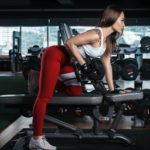
Fitness equipment is any widget or clothes which is operated during any physical activity to augment the endurance and outcomes of the exercise. These devices provide a special kind of movement to the organs of the body. It facilitates the firm or adaptable amounts of resilience.
Fitness Equipment
Equipment includes various types of items such as dumbbells, treadmill, cycle, stepper, twister, weightlifting products etc. Even people keep some gym equipment at home to avoid the need of joining gym centers.
People also prefer those training centers which provides the facility of different types of fitness equipment as the distinguished equipment are used for different purposes. Some are specifically meant to be weight loss apparatuses while others are tailored for movement of particular body parts such as thighs, shoulders or stomach. Many of the fitness equipment don’t require special skills; however, the training personnel should have expertise in using them appropriately.
Fitness Apps
To remain fit one can download fitness apps to watch what you eat and then monitor the calorie intake. Apple watches such as Fitbit can be used to regulate a healthy lifestyle while tracking daily activity. Making ‘not-to-do list’ on the mobile devices enables the individuals to remind themselves about their fitness mission time-to-time.
Why People Prefer Exercise Equipment?
Muscle contraction or relaxation exercises can be done in a better way of using machines rather than doing them in a traditional way. Yes, even recovery exercises may require equipment! Moreover, an individual can increase the level of stretching i.e. through weightlifting devices according to their suitability.
The gadgets can be set at different frequency and speed accustomed to one’s flexibility and intensity. Also, the equipment enables the user to measure their activity in terms of time, speed, distance, and calories burnt. It keeps the individual motivated and inspires to increase their exercise timings the next time.
Various companies such as Apple and Nike have combined the needs of people i.e. listening to the music while going for work-out by launching new footwear in the market which keeps the account of all the points which treadmill does. Even the individuals having some physical injuries tend to use the physiotherapy methods as they provide long-term benefits.
In the era of the mechanized world, people are required to indulge in physical activity for at least 20 to 30 minutes. This can only be achieved by going to gyms as joining any fitness training program becomes a part of their routine and finally, they end up losing their laziness. Even yoga has been augmented by using some kinds of utilities such as balls, dumbbells or other similar stuff.
Importance of Fitness Equipment
Today, people are very much concerned about their health and fitness as the sedentary lifestyle has made it a big necessity. This is also the major reason why gyms avail the facility of flexible hours so that people can make use of it in their leisure time. The exercise equipment is designed in such a way that it matches the required set of needs and demands of the individuals. All this has been made possible only because of the technological advancement which is making the task look easier and achievable.
Sport Outfit
Sports Outfit or Sportswear or Activewear is clothing that includes footwear which is worn especially for sport or any physical exercise. The sports outfits are one of the best parts about the sports persons as it is the first thing that gives them the recognition of their profile just like the doctor is acknowledged by his stethoscope and white coat.
Different games are identified by their different sportswear such as Martial arts include a different pair of clothes that usually includes a white costume while swimming has its own outfit that includes swimming costume.
Dress code
These sports activities have taken the form of a dress code for particular games. In fact, for these purposes, their colors are also given special attention as opposite teams wear different colors. Sometimes, clothes are also used to designate the past accomplishments. Even the sporting brands try to promote the sportswear by printing logos on the t-shirts or shoes.
When one goes to the gym or other physical activities such as dancing or running, they are required to wear fit lowers or sweatpants tracks so that it doubles his efficiency and ease their task. Also, the right clothes at the right time boost one’s confidence. They are designed using specific kinds of fabrics which provide comfort to a person. Polyester and Spandex are the most used fabrics to design a sports outfit.
Even the schools or colleges feel the requirement of sports outfits because sports activities cannot be performed in our routine clothes. The sports shoe, wristbands are the major accessories used these days as they also facilitate the recording of distance, time, speed, and even calories burnt. Some are designed to complement the physical activities, especially for adults: heart rate tracker, blood pressure computing device etc.
Benefits of Wearing a Sport Outfit
Sportswear is fabricated in a way as they don’t become the hindrance in game. They are designed to be lightweight, compressible and not too bulky. Winter sports and summer sports demand different attires.
The outfits worn during different seasons are designed in such ways that during summers, it keeps the player cool while in winters it provides the warmth. The safety measures and insulating properties carry a great significance in sportswear. Moisture-wicking, water-resistant shell garments are preferable by individuals who go skiing or mountain climbing.
Sportswear also includes the safeguarding accessories which are specifically designed for contact sports such as wrestling, ice hockey etc. The items in this category usually include headgear, eye or face shields, mouth guards etc. The protective gears are the major requisites in dangerous sports activities. They help the sportsperson in preventing themselves from severe kind of injuries which can occur on the field.
Brands and fashion
The sporty and cool apparels which big brands sell such as Adidas and Nike are also used as normal wear clothes these days. They have become a new style in the category of fashion and trendy outfits. Mostly, teenagers are attracted to them and try to create a different wardrobe which is full of such outfits.
Since, the activewear has become glamorous the sales have increased, especially in American countries. Even fashion designers have noticed this new wave of clothing patterns and have now started fabricating the brand-new designs. Thus, it is quite common to see a wide range of designs in sports outfits now.
The Significance of Fitness Clothes
Fitness clothes, often referred to as activewear or workout attire, serve a crucial purpose beyond just making a fashion statement. While looking stylish is a bonus, the importance of fitness clothes extends to performance, comfort, safety, and motivation. Here’s why investing in appropriate fitness clothing is essential for your active lifestyle:
- Optimal Performance: Fitness clothes are designed with performance in mind. They provide freedom of movement, allowing you to perform exercises and activities without being hindered by restrictive fabrics. Whether you’re lifting weights, running, or practicing yoga, the right clothing enhances your range of motion.
- Moisture Management: Quality fitness clothes are often made from moisture-wicking fabrics that pull sweat away from your skin. This keeps you dry and comfortable during intense workouts, reducing the risk of chafing and irritation.
- Temperature Regulation: Fitness clothing helps regulate body temperature. Layering with moisture-wicking base layers and breathable outer layers allows you to adapt to changing weather conditions and maintain comfort throughout your workout.
- Support and Compression: Certain fitness clothing, like sports bras and compression garments, provide essential support to minimize movement and reduce discomfort during high-impact activities. Compression clothing can also aid in muscle recovery by improving circulation.
- Safety and Visibility: Reflective elements on fitness clothes enhance visibility during outdoor workouts, especially in low-light conditions. This is crucial for your safety, making you more noticeable to drivers and pedestrians.
- Injury Prevention: Appropriate footwear and clothing can contribute to injury prevention. Supportive shoes, for example, help maintain proper foot alignment and reduce the risk of strains or injuries.
- Psychological Boost: Wearing fitness clothes designed for performance can boost your confidence and motivation. When you feel good in what you’re wearing, you’re more likely to approach your workouts with a positive mindset.
- Muscle Activation and Alignment: Some fitness clothes are designed with strategic compression and support panels that aid in muscle activation and proper alignment. This can enhance your workout effectiveness and reduce the risk of muscle imbalances.
- Comfort and Focus: Comfortable fitness clothes allow you to focus on your workout rather than adjusting uncomfortable clothing. This helps maintain your concentration and maximize the effectiveness of your training.
- Functionality: Many fitness clothes come with functional features like pockets for storing essentials, built-in technologies for device integration, and zippered closures for security during activities.
- Versatility: Fitness clothes often transition seamlessly from the gym to other activities. This versatility allows you to go about your day without needing to change outfits.
- Mind-Body Connection: The act of putting on fitness clothes can trigger a psychological shift, signaling to your mind that it’s time for physical activity. This helps create a mental association between your attire and your commitment to exercise.
In summary, fitness clothes are far more than just fashionable attire. They are tools that facilitate comfort, safety, performance, and motivation during your physical activities. Investing in quality fitness clothing ensures that you’re equipped to make the most of your workouts while prioritizing your well-being and fitness goals.
